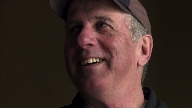The cover story of this month’s Wired could be a casting call for the sequel to Eternal Sunshine of the Spotless Mind. It reads: “One pill to erase your worst memories. Want to try it?” The article, for me, was less about pharmacology and more about the neuroscience of trauma and how our minds recall experiences. OK, perhaps I’m stumbling onto what pharmaceutical companies were meant to do—and perhaps someday may return to doing—namely understanding a problem in our chemical makeup, then prescribing a chemical remedy. When it comes to the brain science of recall, it feels that we’re still so early in the “understanding a problem” phase that it’s premature to start selling pills for it. But back to what the article says about trauma and memory. Let’s just say the synapses are firing for me right now.
Some of the article’s key premises are that:
- Memories are impermanent. This may be surprising since we all know mom’s stories get better on every retelling. No, really: we don’t get it. According to Wired, 63 percent of us think our memory “works like a video camera, accurately recording the events we see and hear so that we can review and inspect them later.” In a word, hardly.
- The retelling of a memory bends it. The article’s author, Jonah Lehrer, emphasizes that each time we dredge up a memory—good or bad—to share, we infuse it with things we’ve learned since then. I believe another very important factor is our audience: we want to be good storytellers, so we emphasize the high points and nix the yawners. Back to mom’s masterful embellishments.
- Recalling traumatic memories can actually reinforce them. The article mentions a once-vogue technique for dealing with trauma called CISD. It involved “debriefing” from a horrible experience with the intent of, perhaps, getting past it. In one cited case, CISD actually tripled patients’ likelihood of developing PTSD. (I don’t mean to oversimplify the studies referenced/quoted above: please read for yourself in Lehrer’s article.)
What really resonated for me in reading the article was the repeated reference to movies as the antithesis of how our memory works. The premise is that once immortalized in the final cut, a film does not change. As a documentary filmmaker, getting the story right—and also telling it well—is at the heart of my job. And of course that’s a dilemma, since we’re dealing with faulty human memory right up to the point we say “that’s a wrap.”
For our film The Movement, our main character must recall, on-camera, the accident six years prior where he broke his back and wound up in a wheelchair. How many times has he retold that story? Has he reemphasized the shock and pain on each retelling? I physically cringe at the thought of how we sadistic filmmakers and storytellers revel in bringing such painful emotions out for all the world to see.
But that’s not what my movie’s about. And this is where something I’ve learned from two very different mentors kicks in. In working with the good people at the Somatic Experiencing Trauma Institute, I’ve learned that our physical bodies are both a place where trauma can get bound up, and also the means by which we can release it. The people at SETI strike me as very nice folks, all dedicated to healing.
Kristen Ulmer is more the no-nonsense, no-fluff, kick-your-butt sports mindset coach. That’s not to say she doesn’t care about your wellbeing, it’s just that she doesn’t particularly want to work with couch potatoes or armchair philosophers. Kristen taught me that talking can only get us so far—and often is holding us back. If we want to move through our fears, we can use a sport like skiing to actually feel progress in our bodies. Of course Kristen physically demonstrates this principle rather than explaining it with language—and she insists in so many words that her clients shut their pie holes and do the same. Apparently I’m not quite ready to give up my words. Sorry, Kristen.
So what our film is about is Rick returning to the mountain, and the sport, where his trauma occurred. Me, as the guy who donned a helmet-cam last May and clicked into Rick’s skis (last worn the day of his accident) to retrace his turns clear down to the cliff edge: in a small way my body has experienced a piece of the story that is his. And if any of that was captured in the story we told in the film, then perhaps viewers, like me, will need to go out and ski it off.
That’s the deal. I tried to make a movie that was more than a retelling. I wanted to show people who have turned tragedy into opportunity. And they didn’t do that by talking about it: they got out there and got moving.
And, uh, no. I’m not interested in a “forgetting pill,” thank you very much.
Cheers,
![]()
Photo from the filming of The Movement
 “I had to get out of my comfort zone.”
“I had to get out of my comfort zone.”